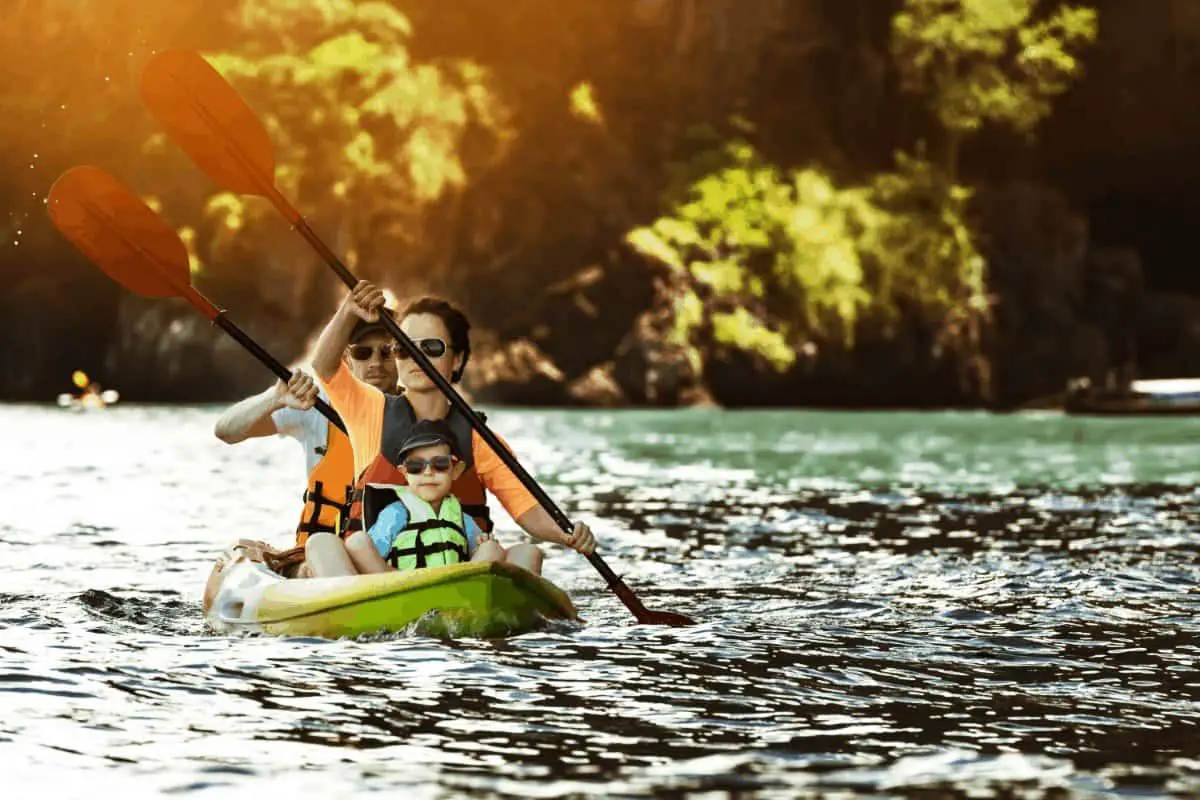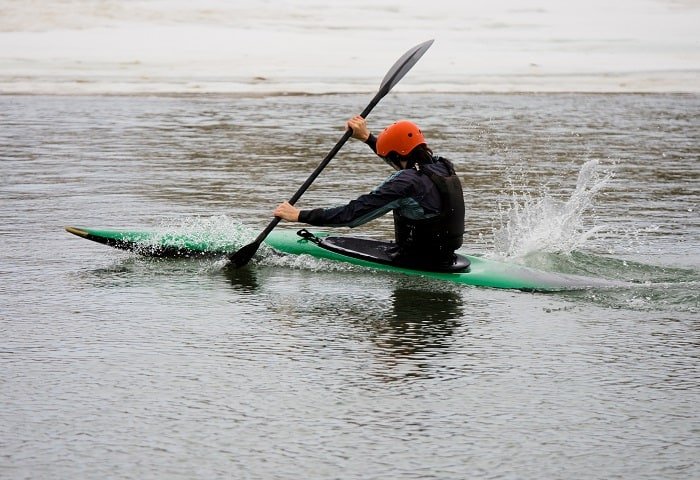Last Updated on July 6, 2022 by Ecorf
If you are new to kayaking, you may find that you are eager to start paddling your kayak across great waters and getting adventurous. It’s okay. Enthusiasm is something that you would always need when kayaking anyway.
However, I don’t think I need to tell you how important it is to learn proper paddling techniques before trying to do any meaningful kayaking. With proper kayak paddling techniques, you would be able to make all your strokes efficient and effective, you would also be saving yourself a lot of stress.
So, here in this article are a few things you should know about your paddle and paddling techniques that are best for beginners.
Table of Contents
Knowing Your Paddle
The first thing you must do before heading out to the water to do any paddling is to find out which paddle is best for you. With the right paddle size, you would find the following paddling techniques easier to learn.
Generally, there are different paddle categories that help us tell them apart. Most of these categories are based on the shape and design of the paddle blades.
Feathered and Parallel Paddles
These paddles are named after the angle that the paddle blades make with each other. Feathered paddles have both paddle blades turned at an angle to each other. Parallel paddles, on the other hand, are not angled to each other.
To put it more simply, if you hold the flat side of one end of your paddle facing you, a feathered paddle would have the other end face your side while a parallel paddle would just have the flat side of the other end facing you as well. Parallel paddles are better for most beginners but a feathered paddle isn’t bad either. As a matter of fact, some paddles can be adjusted to be parallel or feathered.
Symmetric and Asymmetric Paddles
When you look at the blades of your paddle, if your blade has an uneven oval shape with one side of the blade being longer than the other end then it is an asymmetric paddle. Otherwise, you have a symmetric paddle.
Curved and Flat Paddles
Curved paddles look like their blades are bent inwards. This is done so that the blades can pack more water with each stroke, thereby driving you forward more swiftly. And the flat paddles are… well, flat.
Holding your Paddle Right
Now that you know your paddle, the next thing is knowing how to hold it. Don’t forget, all these things are necessary to help make your stokes effortless and efficient.
Grab the paddle so that your arms are held out parallel to the water surface and are bent at right angles at the elbows, but make sure that your grip is as firm and as relaxed as possible. If yours is an asymmetric blade, make sure that the shorter side of the blade is below the other side. Also, if yours is a curved blade, ensure that the blades are curved in facing you.
Grabbing the paddle the way I mentioned earlier, don’t forget that to make the paddle rest perfectly and well-balanced in your grips.
Paddling Techniques
There are a lot of paddling techniques that are great for different circumstances and water bodies. The most common three are;
- The forward stroke
- Reverse stroke
- Sweep stroke
- Draw stroke
The Forward Stroke
This is the stroke you would be using most frequently. Your torso and arms would be doing most of the work when you are using this technique. The forward stroke is divided into three parts; the catch, the power, and the release
Grabbing the paddle as instructed earlier, dip one end of your paddle completely into the water near your feet. This is called the catch. Make sure you do this naturally as you can or you would end up getting wet or uncomfortable.
Then go ahead and draw the end of the paddle that is currently immersed in the water towards yourself until your hand is getting close to your waist. This is called “the power”. Don’t forget to pull with your torso and your arms, not just your arms alone.
Finally, remove this end of the paddle from the water and dip the other into the water. Repeat this process again and again.
The Backward Stroke
The backward stroke is used to slow down or go in the reverse direction. If you already know the forward stroke then you already know the backward or reverse stroke.
Basically, all you have to do is to dip the paddle into the water beside your waist and push forward while the upper end of the paddle os being drawn towards yourself. Smoothly pull out the end that is immersed in water and dip the other end into the water beside your waist again and repeat the whole process.
The Sweep Stroke
The sweep stroke is mostly the same as your forward stroke. Only that you use the sweep stroke to make turnings.
When you dip the paddle into the water near your feet, instead of drawing it straight to yourself as you would in a forward stroke, draw it in an outward arc towards yourself. Then release the paddle when it gets behind you. Sweeping the paddle on your left would make your kayak turn left and a right sweet would turn your kayak right.
The Draw Stroke
This stroke is useful when you want to gently push your kayak to the side while still facing your initial direction. All you have to do is to dip the paddle into the water beside you with the flat side of the paddle facing you. Gently pull the paddle towards yourself and release the paddle before you got your hull.
Wrapping it All Up
Except you haven’t attempted it before, you would know that trying to paddle without these techniques would just have you going aimlessly in circles. So make sure you practice and perfect these techniques before venturing out into the water. Also, if you could get yourself an instructor to teach you these things then by all means do.
Please feel free to dump all your questions, inquiries and thoughts in the comment section below. Cheers!

